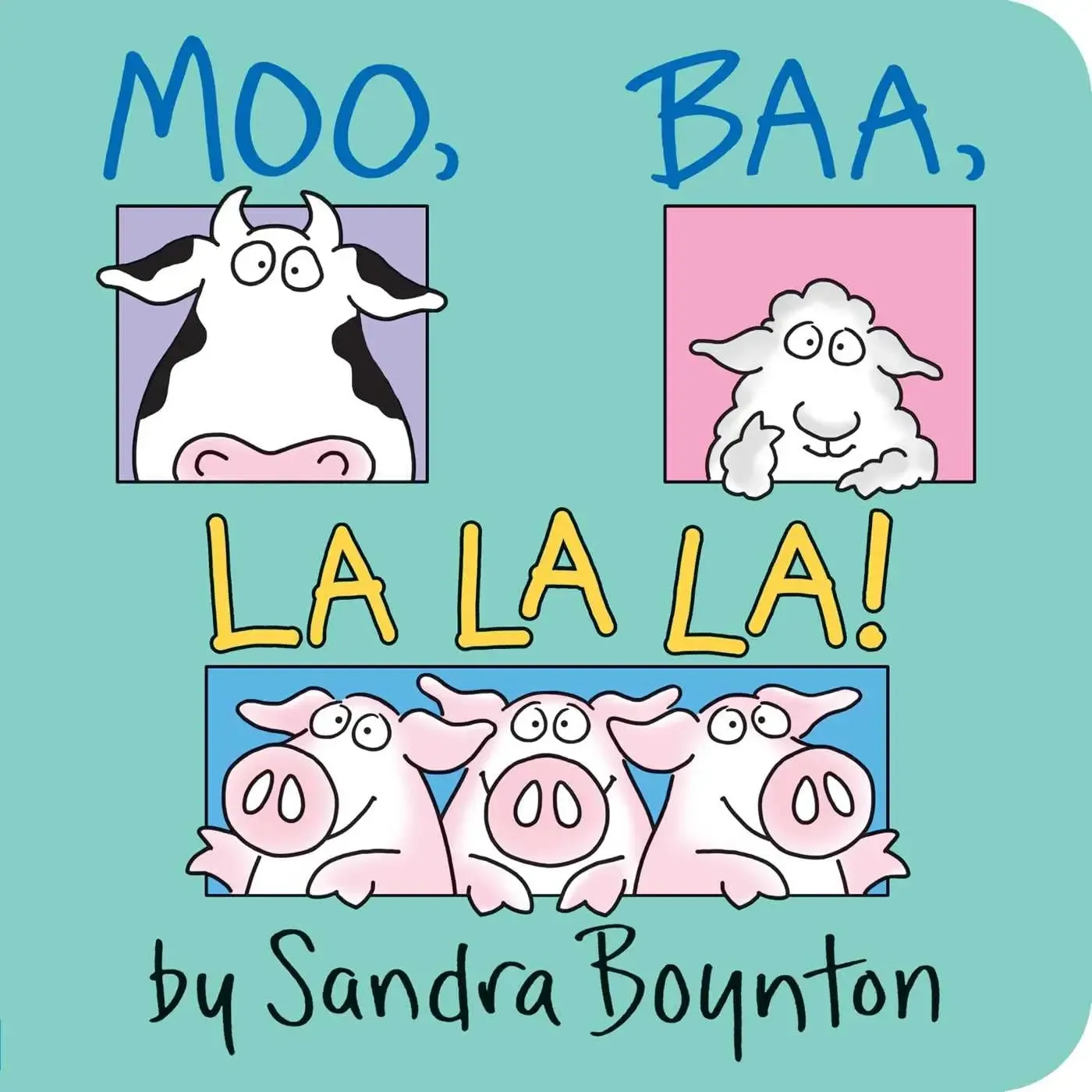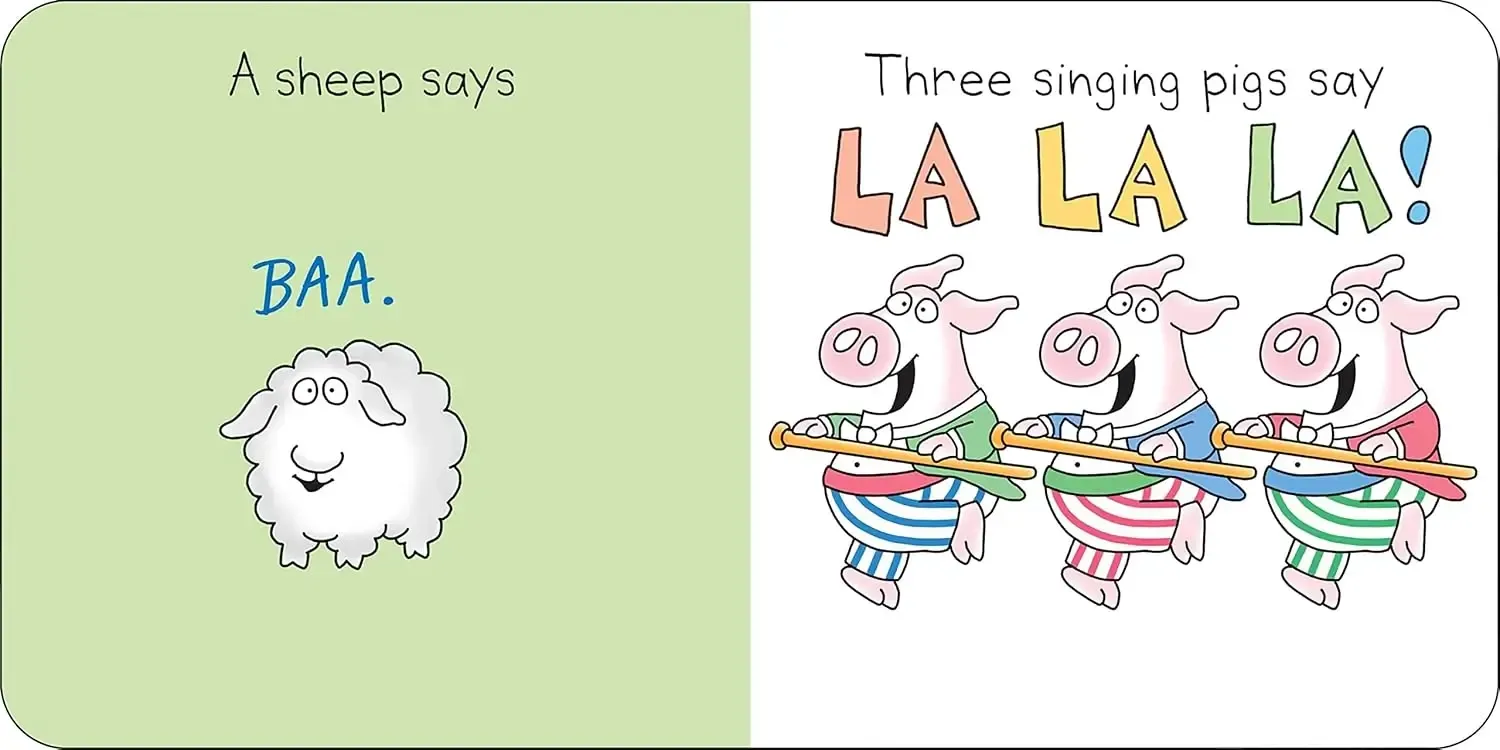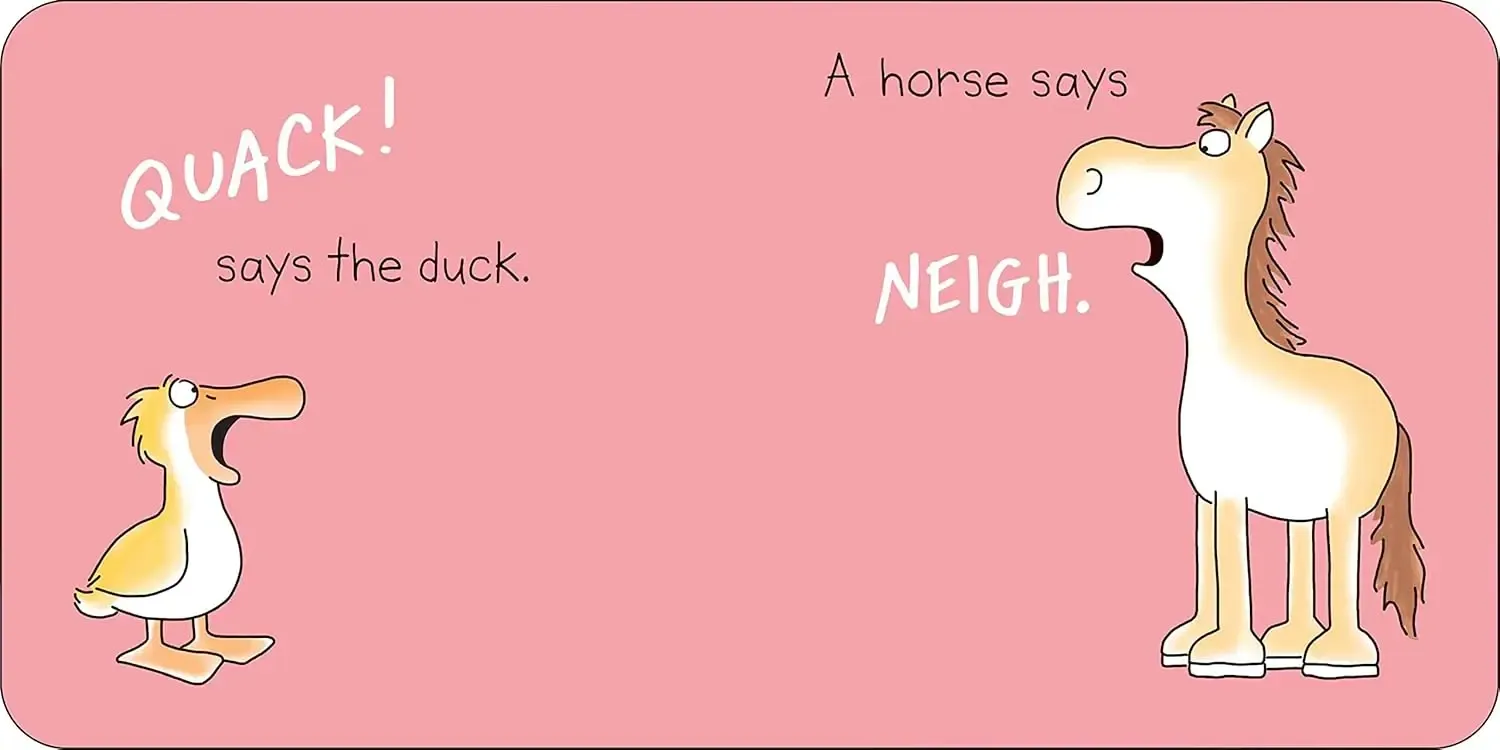Sandra Boynton’s Moo, Baa, La La La! is a lively, joyful board book that has captivated the hearts of babies, toddlers, and parents alike for decades. With its playful rhythm, funny animal sounds, and bright, cheerful illustrations, Boynton’s classic offers a simple but delightful reading experience perfect for the youngest readers. Although the book is short and direct, its charm lies in how effortlessly it captures the attention and imagination of children.
The book introduces a variety of animals, beginning with the familiar sounds of cows saying “moo” and sheep going “baa.” However, when the book presents pigs, there’s an unexpected twist, they say “la la la!” This silly and unexpected moment is what makes Moo, Baa, La La La! so entertaining. Boynton cleverly uses humor to engage young readers, inviting them to laugh and actively participate by correcting the pigs’ behavior. She quickly follows up with, “No, no, you say, that isn’t right. The pigs say oink all day and night,” which gives children the opportunity to interact with the story in a fun and meaningful way.
One of the key strengths of Moo, Baa, La La La! is Boynton’s skill in using repetition and simple language, making it highly accessible to infants and toddlers. The rhythmic, sing-song text flows easily, creating a natural cadence that is ideal for reading aloud. This repetitive structure not only helps children anticipate what comes next, but also reinforces early language skills as they begin to recognize the sounds and names of animals. Boynton’s signature use of humor, combined with the clear and straightforward text, ensures that this is a book young children will want to hear again and again.
In addition to the entertaining text, Boynton’s whimsical illustrations perfectly complement the playful tone of the book. The animals are depicted in her signature cartoonish style, each one with its own distinct personality, drawn with soft lines and gentle expressions that appeal to even the youngest of readers. The bright colors and bold, clean designs keep the focus on the animals, which are instantly recognizable, making it easy for children to identify the sounds they make.
The simplicity of the art and layout also contributes to the book’s success. There is no clutter on the page, which allows young children to focus on the central images and fully engage with the sounds and actions of each animal. The board book format, with its sturdy pages, is also ideal for little hands, making it durable enough to withstand the enthusiastic attention of babies and toddlers.
Beyond the entertainment factor, Moo, Baa, La La La! introduces important developmental concepts. It helps children begin to identify animals, associate them with specific sounds, and anticipate patterns in the text. By encouraging children to participate in correcting the pigs and imitating the sounds of animals, the book fosters early language development, listening skills, and engagement. These elements contribute to a strong foundation for later reading readiness, all while keeping the experience lighthearted and fun.
Despite its brevity and simplicity, the book has a timeless appeal. Part of its enduring charm lies in its balance between the familiar and the surprising. Young children love the repetition of well-known animal sounds, but they are also delighted by the unexpected twist with the pigs. This blend of predictability and humor keeps the book exciting, even after multiple readings, which is one reason why it has become such a beloved staple in many households.
Moo, Baa, La La La! is the perfect example of a book that taps into the natural curiosity and sense of fun that young children possess. Sandra Boynton’s delightful text and lively illustrations come together to create a reading experience that is both educational and highly entertaining. It’s a book that encourages laughter, interaction, and bonding between parents and children, elements that make it a true classic in early childhood literature.
Questions to ask while reading:
- What sounds do cows, sheep, and pigs make?
- Why do you think the pigs say “la la la” instead of “oink”?
- Can you make the sounds of the animals in the book?




